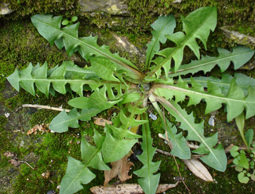People have a multitude of reasons for purchasing a hobby farm. Some have an interest in farming and livestock, whereas others are looking for a place to get away or recreate. Regardless of an individual’s primary motivation, wildlife can be a leading consideration or become a fortuitous byproduct of a carefully selected farm.
No matter what property you buy, wildlife will be there. But will it be the species you want at a population you can manage? By incorporating considerations for wildlife in your property search, you can make your farm investment even better.
Let’s look at selecting a farm from a wild animal’s standpoint: To make your prospective hobby farm their home, they need space, food, water and cover. The specifics of those factors depend on the type of wild animal. For example, a wild rabbit can meet those requirements in a 10-acre field, but a wild white-tailed deer might cover 1,000 acres of forest and fields. Before looking at hobby farm land, identify some wild animals you’d like the land to support. Learn about the habitat those animals prefer and how big of an area they use to meet their needs (called their home range). Habitat considerations will help you choose what proportion of open lands (fields, pastures), idle lands (shrublands, young forest) and forest your farm property should contain. Include wild animals that have dynamic needs in this search. By finding land that suits them, you’ll likely meet the requirements of many other critters. The bobwhite quail is a good example. They require grasslands and shrublands and will use the forest, as well.
Wild animals that have larger home ranges, like deer and turkeys, are more difficult to manage on a single farm. Most hobby farms will not be large enough to influence the density of these animals. In this case, the landscape around the farm will be critically important. Evaluate how your dream hobby farm fits into its surroundings. Using your knowledge of habitat, apply it to properties adjacent to your potential farm. Identify travel corridors that connect the property to the neighbors’ and facilitate undetected movement within the property. Take the time to talk to neighbors if wide-ranging wildlife is of interest. Good neighbor relations are invaluable for wildlife management and farming.
A great wildlife farm will possess habitat that’s not readily available on the surrounding properties. Unique features often include dense woody growth like an old clearcut, wetlands, or good nesting and fawning cover. Water can also provide attractive qualities for wildlife and are critical for livestock operations. Look for properties with well-distributed water in the form of ponds, waterholes, creeks and rivers. Creeks or rivers are most valuable when they meander, as they maximize water frontage and often provide good riffle and aquatic habitats.
Purchasing a hobby farm is a major investment, and it’s worth the time and effort to do your homework. Consider accessing free assistance from state fish and wildlife, forestry, or agricultural agencies. Also, be conscious of development pressures in the surrounding area. If you don’t do your homework, “human advancement” might ruin your wildlife paradise 10 years down the road. Proper selection of a hobby farm can pay dividends for generations.














